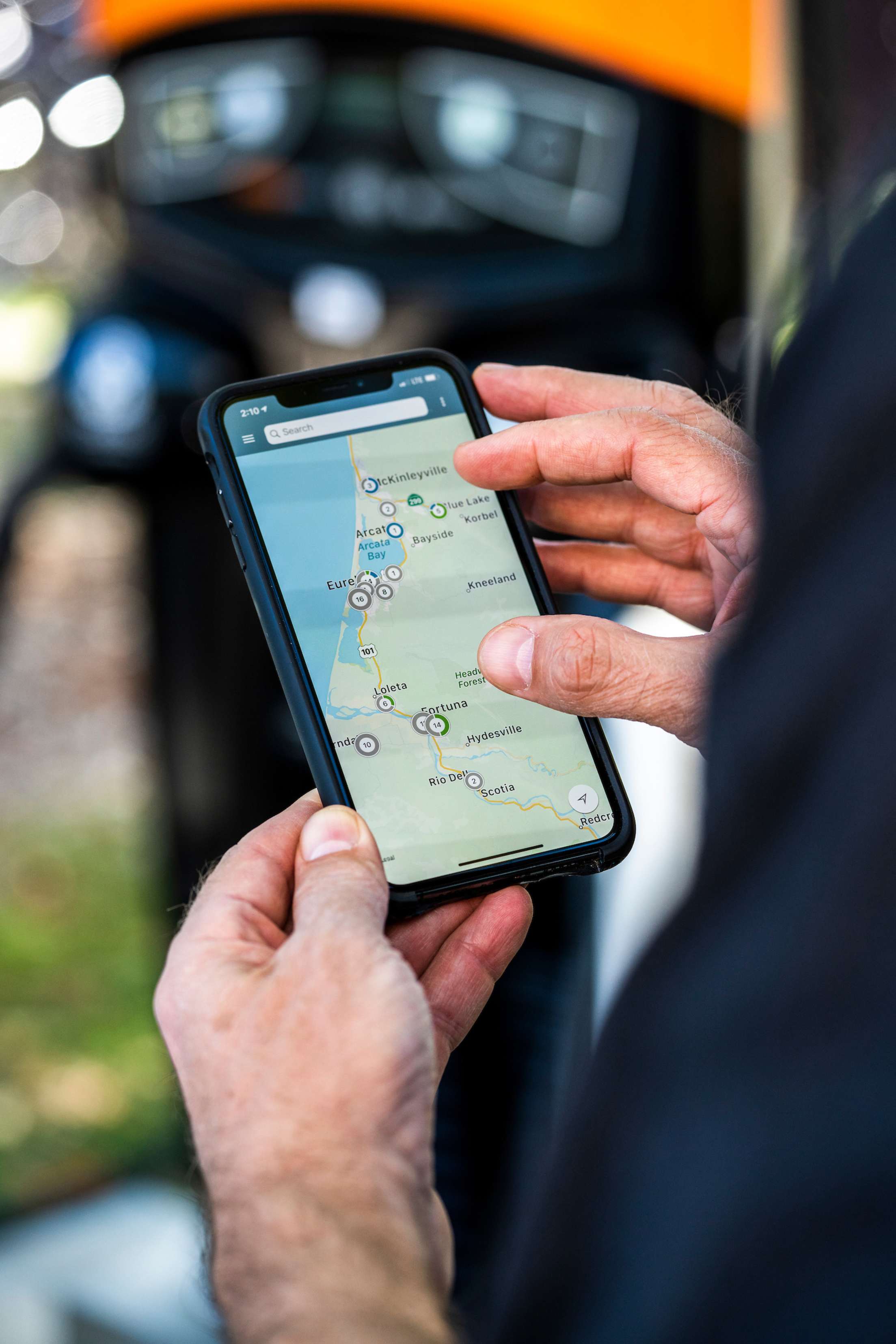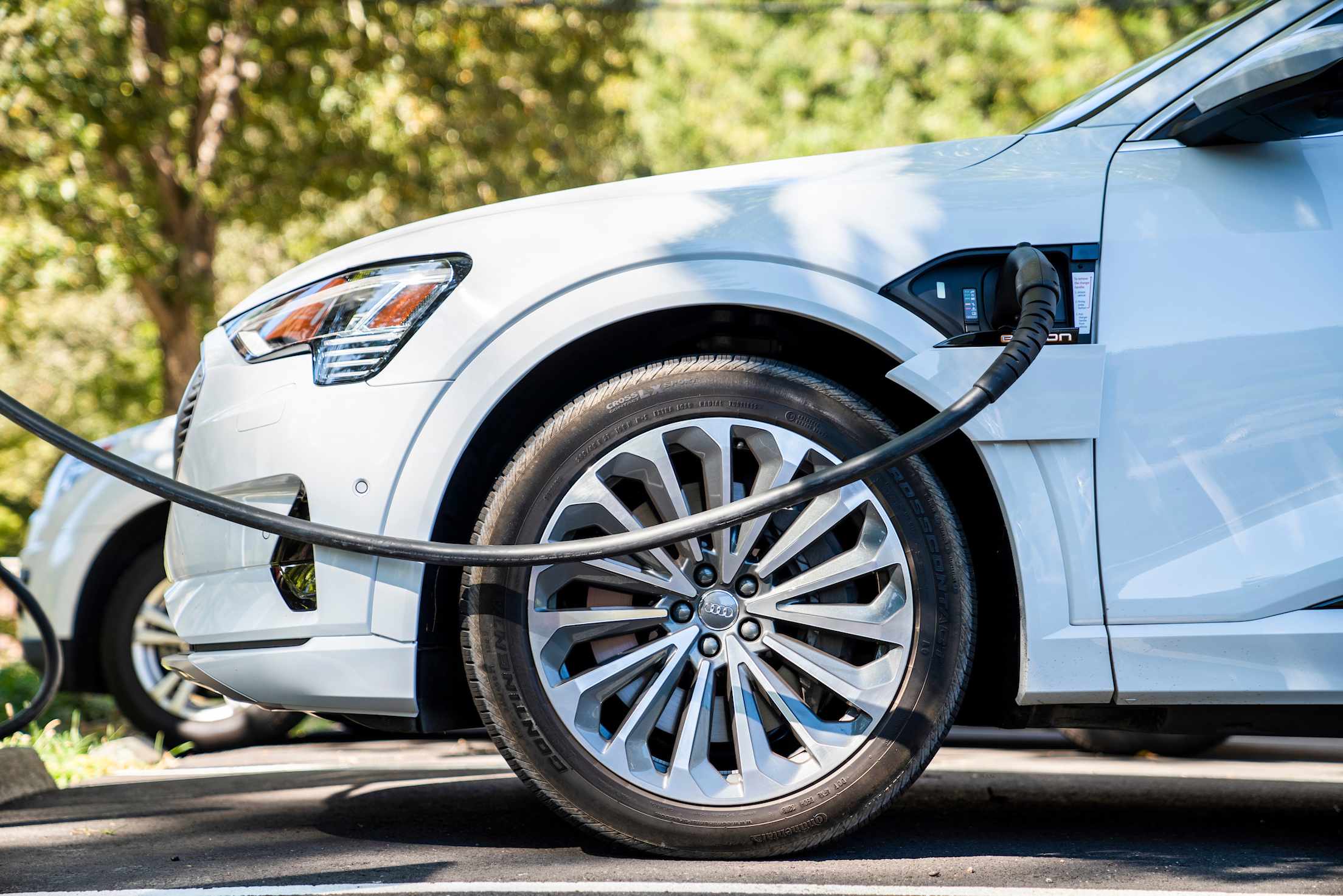
5 Tips for Electric Vehicle Road Trips
From day trips to cross-country ventures, explore the open road in an EV with these helpful tips.

The West’s scenic drives and iconic vistas have long enticed all sorts of road trippers, from RV enthusiasts to impromptu weekenders. These days, another band of drivers has begun to brave the open road. The emergence of long-range electric cars—there are more than 10 U.S. models available that get more than 300 miles on a full battery, with more expected soon—has encouraged the rise of the electrified road trip. An ever-growing network of charging stations helps too.
Whether it’s your first all-electric drive or you’re gearing up for a long distance trip, these tips will help you get the most out of every charge, so you can spend more time exploring the West’s best sights and less time stressing about range.
1. Prep your car.
It’s important to do a quick inspection to make sure your car is ready for a road trip, says Matthew Lum, an automotive technical engineer at AAA. To start, check your tire tread, brakes, windshield wipers, and wiper fluid reservoir. Use a tire pressure gauge to ensure that each tire matches the PSI (pounds per square inch) recommended on the driver’s-side door jam. Low tire pressure can reduce your range and put you at risk of not making it to your planned charging stops.
Pack adapters to expand your charging options, and double-check your car emergency kit—or put one together—to make sure nothing needs to be replaced. Remove any unnecessary items from the trunk and interior. A clean car is safer, and additional weight can reduce your car’s efficiency.
Smart Tip: If you can, avoid using a roof rack—they create drag that can lower a combustion vehicle’s efficiency by 25 percent and reduce EV range. When you need extra space, opt for a more aerodynamic cargo box that attaches to a trailer hitch just behind the car.

EV route planning apps can help you find chargers on the go.
2. Plan for success.
A strategic route and scheduled breaks can make any road trip more enjoyable, but mapping out charging stops and must-sees before leaving is the best way to ensure a safe and smooth electric ride. Planning ahead also ensures that your ride is a good fit for your anticipated trip before you hop in the driver’s seat. A quick calculation of your estimated range and charging speed will let you know if you can make it to each stop as planned and if it might be too far for your vehicle or a too ambitious route.
Apps such as PlugShare and A Better Route Planner will show you compatible chargers on the way to your destination and help you pick the best route. When mapping out your preferred charging stops, Lum recommends being conservative with your range estimate. An EV’s range can vary widely based on weather, road grade, and traffic conditions, and this planned buffer gives you room for fluctuations.
Cold temperatures in particular can decrease driving range because the batteries use more energy to maintain optimal temperatures for driving and charging, and they may also limit the car’s ability to use regenerative braking. The average electric vehicle driving range decreases 12 percent when temperatures dip below 20 degrees fahrenheit, according to a 2019 study from AAA. When the thermometer climbs past 95 degrees, efficiency decreases by 4 percent from the weather alone and an additional 13 percent when the air conditioning is continuously running.
Steep climbs and heavy winds can also drain your battery faster. When you can, take your trip during temperate weather and opt for a flatter route. Otherwise, when driving in a cold or mountainous environment, Lum recommends planning to have 60 percent or so of your stated range just to be safe.
While all EVs will update the range as you drive, Tesla’s on-board navigation system will also make route and driving recommendations based on current battery use and upcoming charger availability. “The [Tesla] navigation system makes [road trips] extraordinarily simple,” says Robert Jardine, an EV driver from Cupertino, California. “You can just get in the car and go.”
But don't be deterred if you don't drive a Tesla; plan ahead, and you can still have a fun, fuss-free EV road trip.
3. Increase your range.
Simple changes to your driving and climate control settings can drastically affect your range. While cold weather alone will eat at your battery, running the heater continuously can cut efficiency by up to 41 percent according to the same AAA study. If you’re driving in the winter, skip the early morning departure and instead go later in the day. Use seat warmers rather than the heater, and park in the sun when you can to warm up the interior. Set your car to heat—or cool in the summer—as needed while it’s charging so you can comfortably start your drive and avoid the added drain on the battery once you’re on the road.
Efficient driving practices apply to EVs too. Slow down to optimize range. While the smooth, continuous acceleration of an electric engine can be thrilling, quick starts and sharp acceleration require additional energy. Abrupt braking and hard stops can reduce regenerative braking efficiency and limit how much energy you are able to recover. Turn off ‘sport’ mode (or the equivalent) if available to make acceleration less aggressive or stretch your range with the ‘eco’ setting, if your car has one.
4. Take advantage of stops.
Depending on the range of your vehicle, you may need to charge every 80 to 350 miles. The good news is that many charging stations are located near restaurants and restrooms or coincide with a detour-worthy destination. While you wait, refuel yourself, stretch your legs, and see sights. You can even go for a hike or adventure if you use one of the 70 charging stations that have been installed around national parks across the U.S.
“Think about your relatively more frequent stops at DC fast chargers on long distance drives as an opportunity to experience the unexpected and see things you otherwise would not see,” says Marc Geller, an EV driver who has driven across the country twice in a Tesla Model S and a board member for the electric car advocacy non-profit Plug In America.

Get the most out of each stop.
5. Charge faster.
Going from an almost empty battery to 80 percent can take 20 minutes to more than 8 hours depending on the type of charger you use, battery size, and the technology in your car. It goes without saying that you want to use the fastest compatible charger possible when you’re on the go, but there are other things you can do to spend less time waiting.
- In the winter, look for chargers in a garage—cold temperatures make it more difficult to charge, which means you regain range at a much slower rate.
- Keep your battery between 20 and 80 percent. It will charge the fastest when it’s low, and slow to a near drip as it gets close to being full. Charging less but more frequently will get you back on the road faster than if you were to charge to 90 percent and drive a bit farther before stopping.
- Have a backup charging plan. Your range may drop faster than you expect, someone might already be in the spot, the charger may be broken, or there may be a line. You can find an alternate with an app that lets you filter by charging speed, such as PlugShare and ChargeHub.
- Download the apps for popular, compatible charging networks along your route before you arrive so you can pull up and plug in. Not all stations take credit cards, and cell service may be limited.
- Look for accommodations with a charger. The best time to charge is when your car would be sitting idle anyways. Chargers at many hotels will show up on PlugShare or other mapping apps, but you can also call and ask hotels if they have a charger or a regular 120 volt outlet that is accessible from the parking lot. Electric cars charge slowly when plugged into a regular home outlet, but it could be all you need to make it to the next charging stop or avoid going out of your way to find a fast charger, according to Geller. You can also charge at campsites with RV hookups when driving in more remote places—RV Parky can help you find one nearby.
- Borrow a charger. PlugShare will help you connect with a local who has a compatible charger. Bonus, while you wait, you can also ask for insider knowledge about your route and things to see in the area.
- Embrace popular electrified routes. From the West Coast Green Highway to scenic roads across Norway, many popular routes have been upgraded with frequent charging stations to take the extra effort out of driving electric.
AAA Members save on electric vehicle charging at EVgo fast-charging stations nationwide.